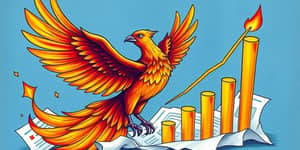
Deciding where to park your savings for the long haul can feel overwhelming. Two of the most popular choices—mutual funds and ETFs—each offer unique benefits and trade-offs. This article explores their core features, costs, tax implications, and more, helping you craft an investment strategy tailored to your goals, risk tolerance, and lifestyle.
At their essence, both mutual funds and ETFs pool money from many investors to buy a diversified portfolio of stocks, bonds, or other assets. However, they differ in structure and trading mechanics.
Mutual funds are typically actively managed by professional teams aiming to beat a benchmark index. Investors buy shares at the fund’s net asset value (NAV), which is calculated once per day after market close. ETFs, on the other hand, generally track an index or sector passively and trade on exchanges like individual stocks, offering intraday pricing and liquidity.
One of the most visible distinctions is how and when you can trade these products. ETFs allow you to buy or sell shares throughout the trading day, capturing real-time market movements. Mutual funds execute trades at the NAV determined after markets close, providing simplicity but no intraday flexibility.
This table highlights why ETFs are favored by self-directed investors seeking real-time pricing and intraday trading flexibility. Conversely, mutual funds appeal to those who prefer a straightforward purchase at a known price.
Costs can significantly impact long-term returns. ETFs generally offer lower expense ratios and higher tax efficiency, with many broad-market index ETFs charging as little as 0.03% to 0.10% annually. Although some brokers still levy trading commissions, the rise of commission-free platforms has made ETFs even more cost-effective.
Mutual funds often carry higher fees, especially actively managed ones, whose expense ratios can exceed 0.50% to 1.00% or more. Additionally, around 8% of mutual funds impose front-end or back-end load fees, and some charge ongoing 12b-1 fees to cover marketing costs.
Taxes can erode gains over time, so minimizing distributions is crucial for taxable accounts. ETFs benefit from an in-kind creation and redemption mechanism that limits capital gains distributions. When shares are created or redeemed, securities exchange hands without triggering a taxable event for existing investors.
Mutual funds, however, must buy and sell underlying assets to meet redemptions, potentially realizing gains that are passed through to shareholders. Even investors who hold shares for years may face unexpected tax bills if the fund manager turns over the portfolio heavily.
Mutual funds traditionally emphasize active management. Skilled managers research individual companies, sectors, or bonds, seeking to outperform benchmarks. While this can lead to higher returns, it also introduces manager risk and higher fees.
ETFs are dominated by passive, index-tracking strategies that mirror the performance of benchmarks like the S&P 500 or a bond index. This approach offers predictability and low costs. Recent years have also seen the rise of actively managed ETFs, blending targeted strategies with ETF tax benefits.
For many long-term investors, discipline and consistency matter most. Mutual funds excel here: most providers enable automatic investing features ideal for retirement plans, including dollar-cost averaging into 401(k)s and IRAs. You can schedule regular contributions and reinvest dividends without friction.
ETFs do not natively support automatic periodic purchases in most brokerages, though dividend reinvestment plans (DRIPs) can help. ETFs are less common in employer-sponsored retirement plans, though some platforms are beginning to integrate them.
No single solution fits every investor. Factors such as cost sensitivity, tax considerations, trading preferences, and the desire for automation will shape your decision. Many experts advocate a hybrid approach that leverages the strengths of both vehicles.
This balanced strategy can optimize costs, taxes, and convenience across account types.
The investment landscape never stands still. In 2024, the launch of spot Bitcoin ETFs signaled growing demand for alternative asset classes within the ETF wrapper. Meanwhile, thematic ETFs offer targeted exposure to sectors like clean energy and artificial intelligence, catering to niche interests.
Mutual fund providers respond with new vehicles that reduce minimums or eliminate loads, blurring traditional distinctions. Robo-advisors now allocate portfolios into ETF and mutual fund blends, automated to align with risk profiles and rebalanced periodically.
Your long-term investment success hinges on clarity, patience, and a well-constructed framework. By understanding the core differences—trading mechanics, fees, tax impacts, and automation—you can match each vehicle to your needs. Remember, the journey of compounding returns rewards consistency more than market timing.
Whether you lean into the active insights of mutual funds or the cost-efficient simplicity of ETFs, a diversified blend can harness the best of both worlds. Start by defining your goals, reviewing costs, and selecting the right account types. Over decades, these choices will compound into a secure financial future.
References













